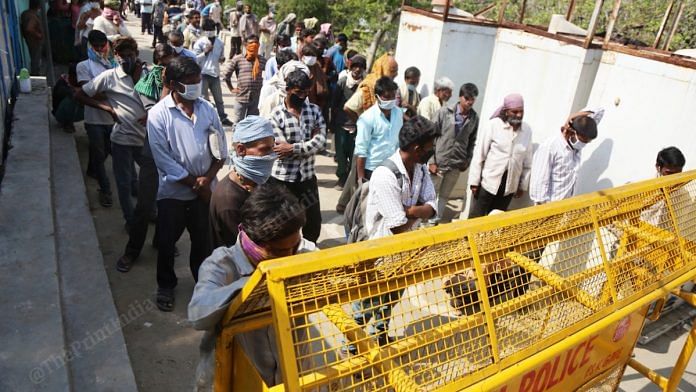 Trump versus ‘China Joe’
Trump versus ‘China Joe’
C Raja Mohan | Director, Institute of South Asian Studies, National University of Singapore
The Indian Express
Mohan notes that China has replaced Russia as the ‘foreign hand’ in US politics. As US President Donald Trump has tried to brand Democratic presidential candidate Joe Biden as a Chinese sympathiser, Biden is likely to adopt a more critical stance towards China to prove Trump wrong, he argues. Unlike Russia, China is far more central to the US economy and a “powerful political challenger to America’s global leadership”, writes Mohan. He concludes that when domestic contestation overwhelms foreign policy discourse, there is no knowing where it might lead to.
 Covid-19: Private sector has a key role in the battle
Covid-19: Private sector has a key role in the battle
Indu Bhushan | CEO, Ayushman Bharat PM-JAY and National Health Authority
Hindustan Times
In India, both the public and the private sector need to work in tandem to respond to the large-scale epidemic, writes Bhushan. For now, the Covid testing is being done in public facilities but as the epidemic progresses, these services will need to be expanded several fold, with the private sector stepping in as a major stakeholder, he comments. Bhushan suggests that the process should be steered by the government through a clear policy framework of designated hospitals, reporting, and referral systems and an appropriate payment system.
 Covid-19: Unemployment rate rises to 24% amid nationwide lockdown
Covid-19: Unemployment rate rises to 24% amid nationwide lockdown
Mahesh Vyas | MD & CEO, CMIE
Business Standard
India’s unemployment rate rose to 24 per cent in the week that ended on 12 April. Vyas argues that these high levels of unemployment are surprising. Unemployed people don’t continue to search for jobs in an economic crisis, they just quit labour markets, which usually causes a drop in unemployment rates. However, during the lockdown, the labour force has shrunk because of the “existence” of unemployed and employed people who lost their jobs from the labour markets. The rise in unemployment, thus, can be attributed to the fact even though fewer people are looking for jobs today than before, many more of them are unable to find jobs. “Before the lockdown, 42 per cent of the working age population was looking for jobs and 7-8 per cent were not finding jobs. Now, only 36 per cent of the working age population is looking for jobs and yet, nearly a quarter of them cannot find jobs.” explains Vyas.
 Let’s mobilise the funds we need to secure country’s future
Let’s mobilise the funds we need to secure country’s future
Narayan Ramachandran | Chairman, InKlude Labs
Mint
Even though the immediate economic response to the coronavirus crisis has been to provide relief, Ramachandran argues that the economic response must “morph into a grand post-covid reconstruction programme”. He maintains that the government must accept the role of the private sector and enable it to do the work because governments misinterpret a crisis as an opportunity to interfere in markets and pricing. He introduces two government-led initiatives that can be used to help in “reconstruction”, a banking sector revitalisation plan (BSRP) and an infrastructure and works programme (IWP). BSRP is needed because the banking system “has been gummed up” with extra non-performing assets and the IWP is needed to create a footprint for electricity, roads, bridges, ports etc. and providing employment opportunities.

 A stimulus package is not enough
A stimulus package is not enough
Anuraag Saxena & Kushal Mehra | India Pride Project and director at textile company
Financial Express
The lockdown has resulted in India “staring deep into the abyss of a fractured economy”, write the authors. Saxena and Mehra maintain that all discussions on short-term inflation, fiscal deficits and credit ratings must take a temporary halt. They argue that in times of crisis, the simplest explanation is the right one, which is that there must be a temporary influx of capital in the hands of those that drive the economy. Saxena and Mehra suggest that India has two options — either to “follow piecemeal, half-hearted, isolated efforts” or to “look at the crisis as an opportunity and empower our entrepreneurs to rise like a phoenix”.
 The US has moved to soften the Covid-19 blow
The US has moved to soften the Covid-19 blow
C. Gopinath | Professor, Suffolk University, Boston
Hindu Business Line
Gopinath lists that many companies have resorted to different responses to cope with economic losses during the lockdown, ranging from layoffs, paying part salary to furloughs. In the case of a furlough, a worker can stay on roll for the organisation but isn’t assigned any work so doesn’t receive pay. Gopinath argues that the federal government’s rescue plan helps in this scenario since it provides benefits for those hurting during the crisis. Another provision that helps small businesses maintain employment is offering grants. Finally, he asserts that there must be a sharp focus on alleviating the drop in earnings because it’s not only a humane thing to do but it also keeps up demand in the economy.




Unemployment would cross 30%